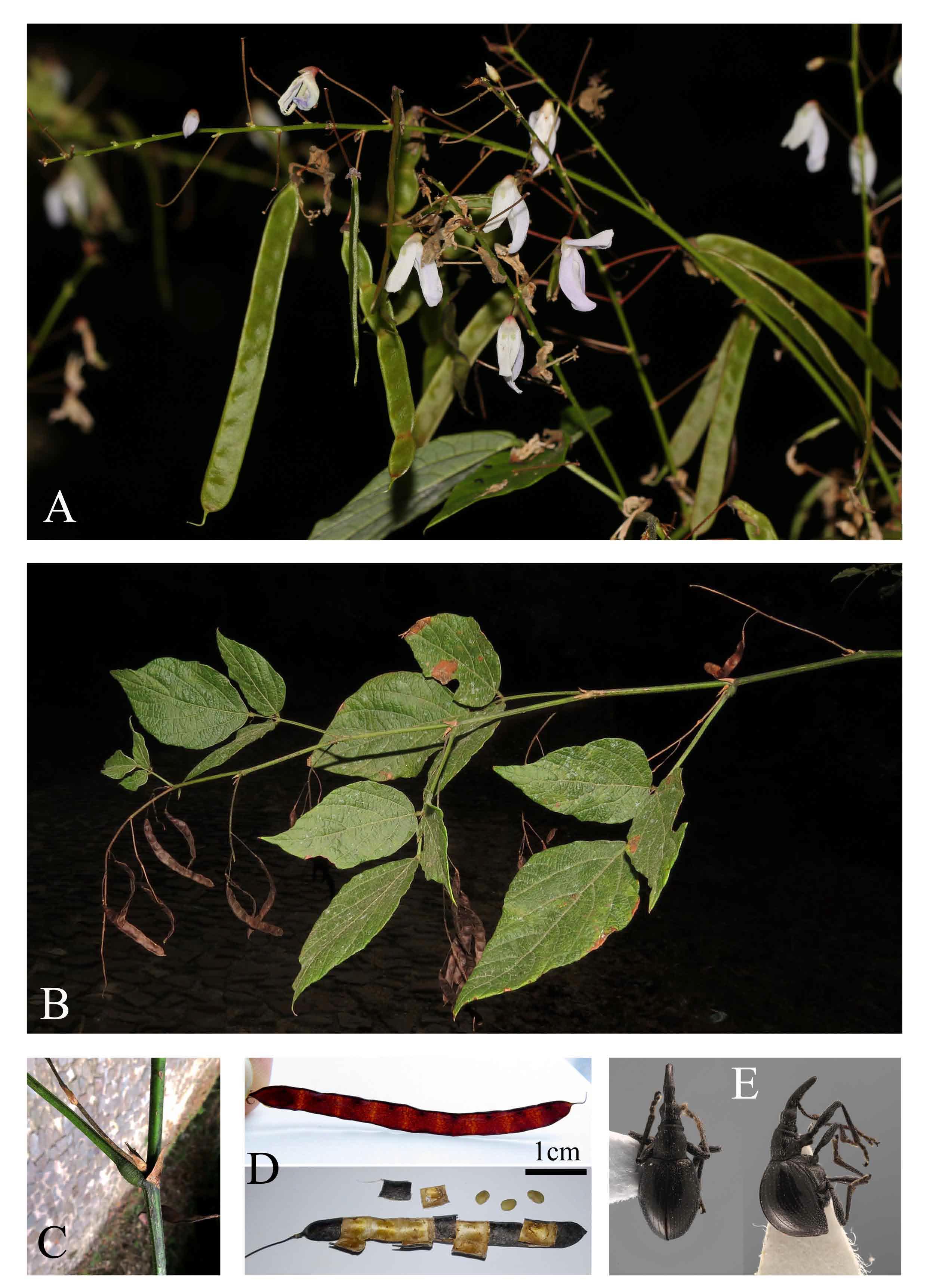Pseudarthria is a small genus of 4–6 species distributed in the Old World. The species of Pseudarthria are all pinnately 3-foliolate herbs, shrubs or subshrubs and closely resemble Desmodium, but differ in their unsegmented fruits.
During a field survey in Menghai, Yunnan Province, researchers from Xishuangbanna Tropical Botanical Garden (XTBG) found a distinct ‘Desmodium-like’ species that morphologically did not match any of the known species from China. After examining morphological characters and comparing possible relatives based on the specimens, they regarded the species is new to science.
Molecular phylogenetic analysis of the concatenated chloroplast fragments of rbcL and matK confirmed the position of the new species within Pseudarthria. The researchers named it as Pseudarthria panii and got it published in Phytotaxa.
Pseudarthria panii is similar to Pseudarthria viscida in the rhomboid-ovate leaflets and unjointed pods, but differs by its taller and upright growth form, late flowering in September, leaflets with an acuminate apex, light purple and longer flowers, etc.
The new species also resembles Desmodium megaphylla, a species widely distributed in Asia including China, especially under the flowering condition, but differs from it by the linear and unsegmented fruits.
Pseudarthria panii is a shrub with several clustered stems rising from one rootstock, 1.5–3.0 m tall, slightly zigzagged, and few branched. The flowering period is very short, from late September to early October and fruiting occurs in October to December, with the fruits persistent on the branches until the following May. Its young leaves and fruits are always infested by pests.
Pseudarthria panii is distributed in the broad-leaved montane forests in China (Yunnan Province), Laos, Myanmar, Thailand and Vietnam, at an elevation of 900–2000 m.
Contact
PAN Bo
Center for Integrative Conservation, Xishuangbanna Tropical Botanical Garden, Chinese Academy of Sciences, Mengla,Yunnan 666303, P. R. China
E-mail: pb@xtbg.org.cn

Pseudarthria panii. A. Flowering branch. B. Fruiting branch. C. Stipule on angulate stem. D. Fruits. E. Conapium schenklingi,
weevil from the pod.
(Images by PAN Bo and WANG Zhiliang)

